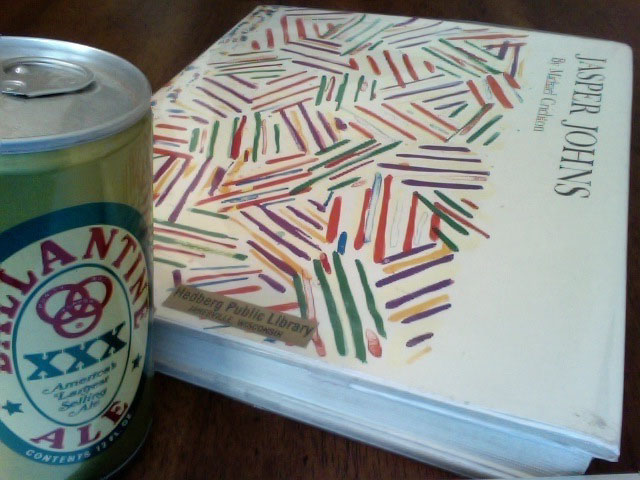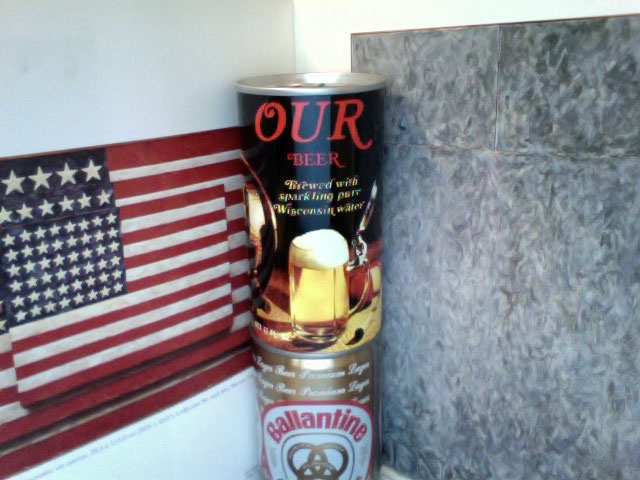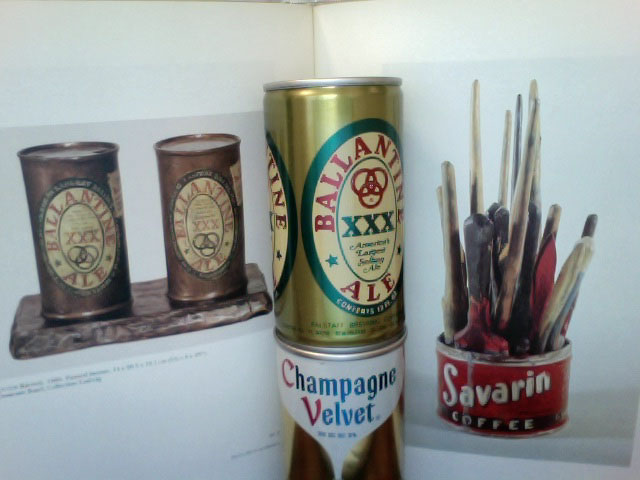MICHAEL NED HOLTE [NOMINATED BY RICKY SWALLOW]
— Years before I knew him as the author of Jurassic Park (1990) and many other popular adventure novels, I knew Michael Crichton as the author of a monograph on Jasper Johns. The book, simply titled Jasper Johns, was published in 1977 by Harry N. Abrams Inc., in association with the Whitney Museum of American Art. The book accompanied a major retrospective of Johns’s work at the Whitney that year, organized by David Whitney. The exhibition traveled to Cologne, Paris, Tokyo, London, and San Francisco. As a four-year-old in Wisconsin at that time, I missed the show. But I can say, without question, that Crichton’s monograph was the most important book in the world to me when I was 16 or 17 years old.

I think I was probably introduced to Johns’s work by my high school painting teacher, Mrs. Belling, though I also remember my A.P. English teacher, Ms. Adams, had a poster of Johns’s Three Flags, 1958, on the bulletin board on the back wall of her classroom. I’ve forgotten the order of events, so I’ll thank both of these hip ladies for the introduction; it apparently led me to seek out Crichton’s book, which I found and checked out from the Janesville Public Library. I’m not sure how much of Crichton’s text I actually read at the time. In retrospect, the essay is pretty unusual—often fragmentary and given to meandering. It’s frequently speculative, searching. He relies heavily on the writing of critics such as Leo Steinberg and David Sylvester (and rightly so), but goes beyond the more-familiar terrain of modern art to consider Johns’s relationship to everything from cave painting to Hitchcock’s Psycho. It’s a pretty wild ride.

I didn’t grow up visiting the museum: As far as I knew, art was something that happened in sketchbooks and scraps of paper, by virtue of my own hand. Looking back, I now realize the bustling margins of Crichton’s book provided my first exposure to Marcel Duchamp, who appears frequently throughout its pages, along with Merce Cunningham and a bearded John Cage. There’s also Manet’s Bar at Folies Bergères, Picasso’s Les Demoiselles d’Avignon and an exquisite corpse by Yves Tanguy, Joan Miro, Max Morise, and Man Ray—probably my first encounter with that favorite Surrealist game. I also remember being struck by a small black-and-white image of the interior of Johns’s house in Stony Point, New York, with glass-paneled, roll-up garage doors serving as walls. Windows as walls! Who knew?

Above all else, I suspect I was more taken with the book’s numerous color plates (ale cans, targets, and flags—oh my) including a handful of splashy foldout spreads: Crichton’s book was like a thick Playboy for a teenage art nerd, with Johns’s multi-canvas assemblies of the 70s standing in for naked beauties, with hatchmarks and flagstone patterning replacing goosebumps and tanlines. I don’t remember when I realized that the guy behind Jurassic Park, Rising Sun, and The Andromeda Strain was the same person behind Jasper Johns—the monograph slipped from my attention for many years. But when Crichton died in 2008, I immediately thought of the book, still likely sitting on the shelves of what is now known as the Hedburg Public Library, not dinosaurs. I also finally bought a copy of the Johns monograph for my own shelves—not the revised and expanded 1994 edition, but the 1977 version I remembered, more or less clearly. Of course it’s impossible to know for sure, but I wonder if I would have become an art critic, writing catalogue essays of my own, had I not found this book.
Images: JASPER JOHNS checked out from the Hedburg Public Library, Janesville, Wisconsin, October 2010. Beer cans from the Frederick M. Holte collection.
—
Michael Ned Holte is a writer and independent curator based in Los Angeles. A regular contributor to Artforum International, his writing has also appeared in print periodicals such as Afterall, Domus, Frieze, Interview, Pin-Up, and X-Tra, as well as the online journal East of Borneo. He has provided texts for numerous books including RICHARD HAWKINS—THIRD MIND (Art Institute of Chicago/Yale), STEVE RODEN: WHEN WORDS BECOME FORMS (Pomona College Museum of Art), and ROY MCMAKIN: WHEN IS A CHAIR NOT A CHAIR (Skira/Rizzoli). He has organized exhibitions in New York, Los Angeles, and Torino, Italy. He was born in Janesville, Wisconsin.
